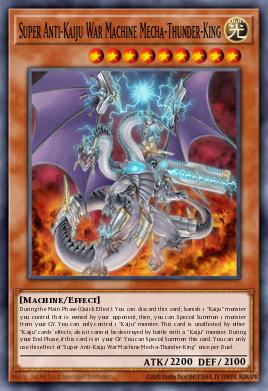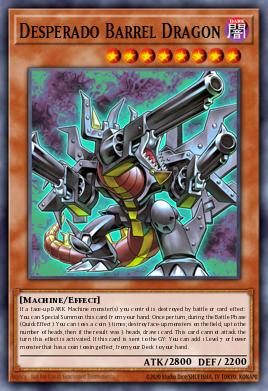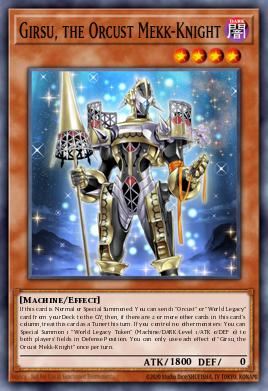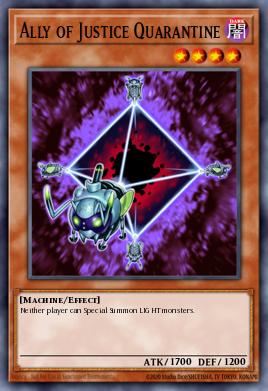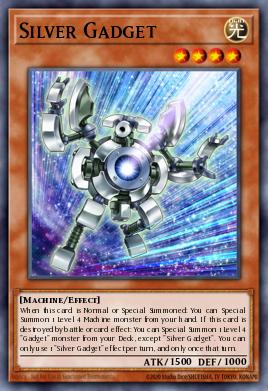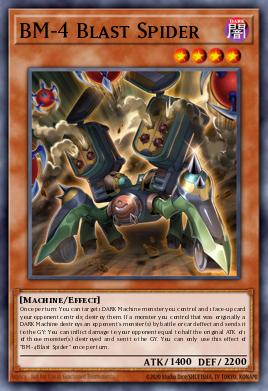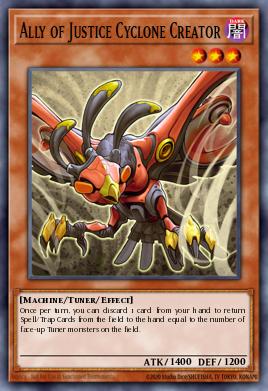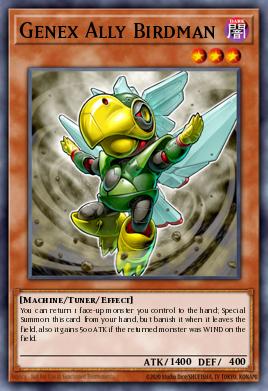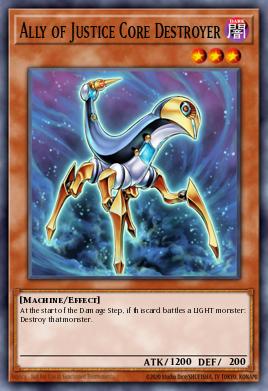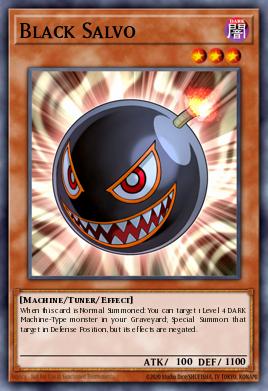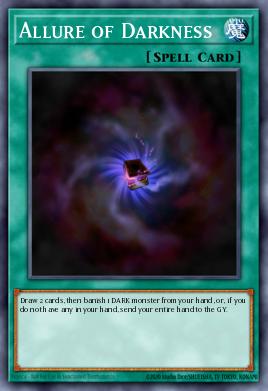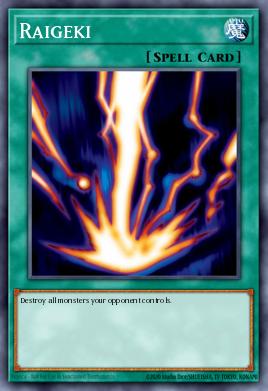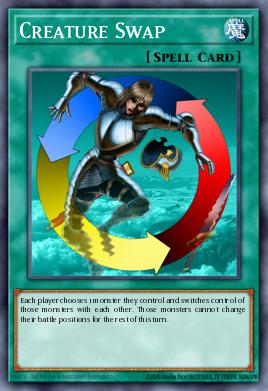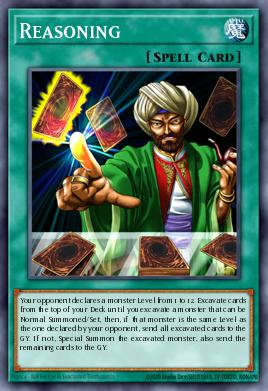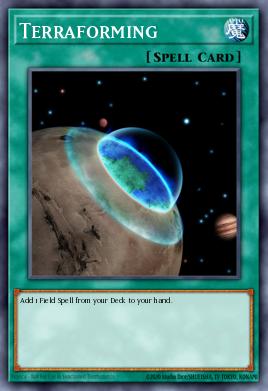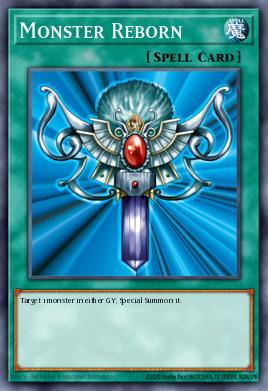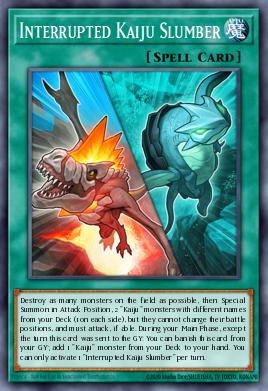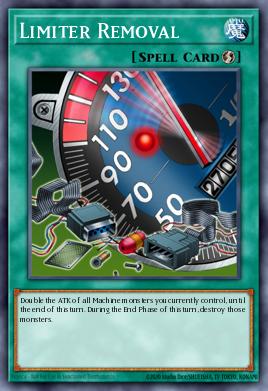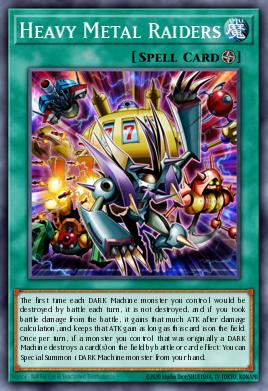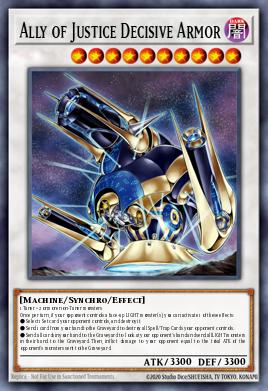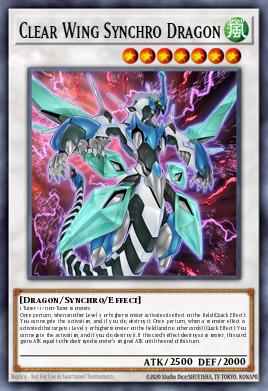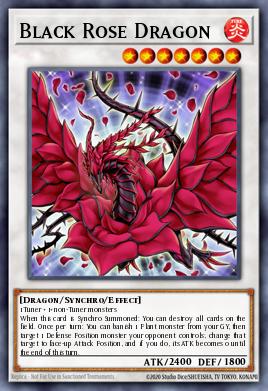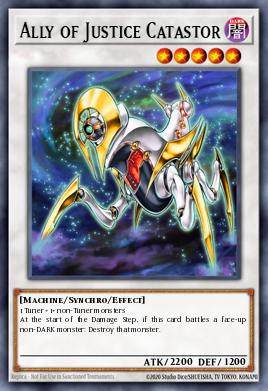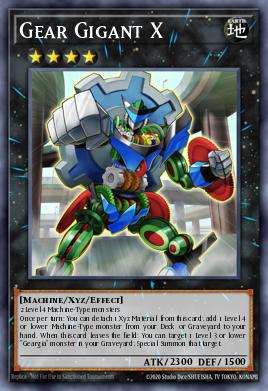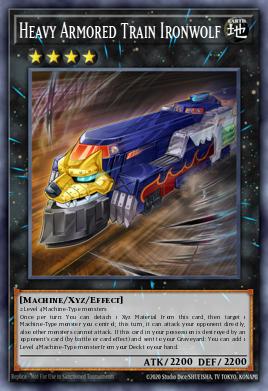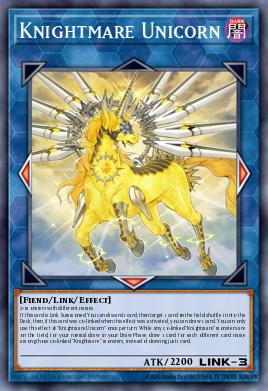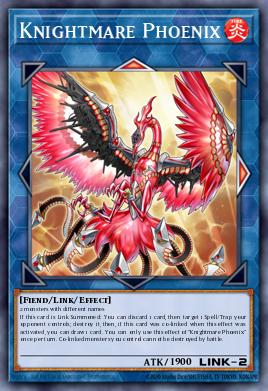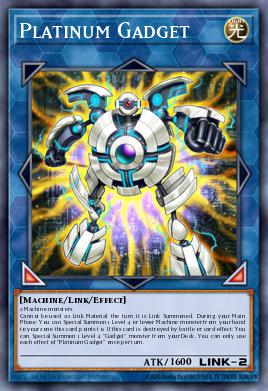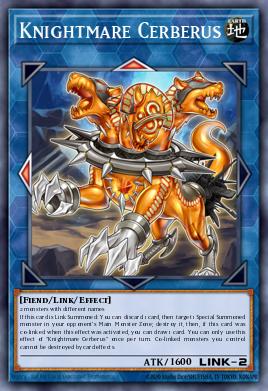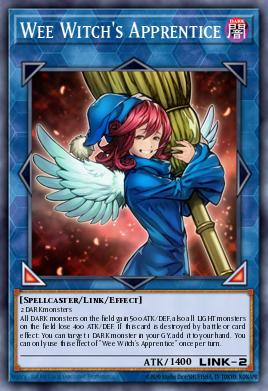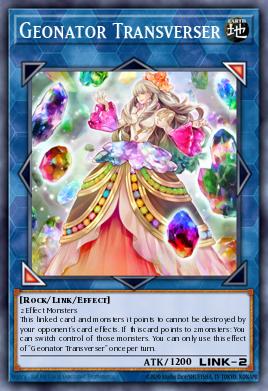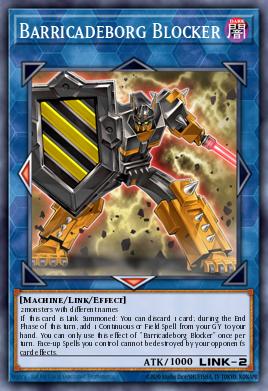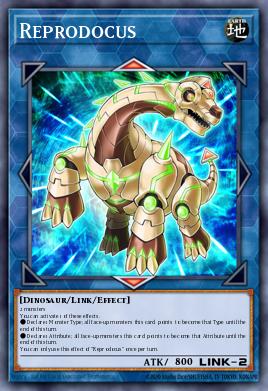Yugioh, the game we all love and play, has a fairly unique way of grouping cards for deckbuilding when compared to other card games: archetypes. Archetypes are the vast variety of card groups that make up a sizeable amount of this game. They all feature their own unique playstyles, strategies and signature quirks. The community is ever-creative and builds all sorts of decks with various strategies in mind; and I always enjoy seeing new and cunning ways of people using their printed cardboard. Today I will try to get creative with a subject that does not give me that much wiggle room: Ally of Justice.
In a game the size of Yugioh, it is only natural that some of the options for deckbuilding fall to the wayside. Oftentimes, the sheer amount of potential choices are to blame, but in some cases the archetypes in question are just less popular due to being rather... well, bad. This is pretty much the case for Ally of Justice, which has various contras accrued against itself while providing little pros to why they should be played. However, I would still like to take a look at this unpopular group of cards and describe how one could actually attempt to build a deck centered around the Allies.
The Archetype
The Ally of Justice archetype comes from the infamous Duel Terminal or Hidden Arsenal booster series. Canonically, they are an alliance of various tribes working together against the menace that is the Worm archetype. That is also the reason to why they feature various effects that are supposed to "counter" said Worms. However, while this was a sound idea on a fluff-level, the problem regarding real-life cardboard is that they have no real advantage against a vast amount of other cards, archetypes and strategies in the game.
In addition to that, Ally of Justice is a rather old archetype. They have not received meaningful support during the last decade and also lack Spell/Trap support; all factors making it that much harder to work with them. I would say that you can still use them to build a fairly unique beatdown deck, which is what I will talk about for the rest of this article.
But before we actually start thinking about what exactly there is to do in terms of deckbuilding, let us first see what we are dealing with here:
- Attribute: Dark
- Type: Machine
- Levels: Various (2, 3, 4, 5, 6, 8, 9, 10)
- Extra Deck usage: Synchro
Surprisingly, the Allies of Justice have a pretty solid Attribute/Type combo with Dark / Machine. Being able to use generic Dark support like Allure of Darkness is a solid start. Additionally, having cards like Limiter Removal at your disposal in a beatdown-focused deck is more help from the generic card pool. However, the Levels of the Allies are all over the place. While this is not as problematic in ranges from 1 to 4, they do unfortunately feature a lot of tribute monsters that you can hardly ever make use of. In terms of the Extra Deck, the archetype has four Synchro monsters to work with. This sets them up for Synchro monster usage, but no effect restricts them from utilizing other monster types in the Extra Deck, which is very much recommended. With this out of the way, we will continue with the actual cards.
The Members of Ally of Justice
The Zeroes
- Clausolas: A Level 6 Normal Monster with underwhelming stats in an archetype that does not support Normal Monster usage.
- Enemy Catcher: Another Tribute option that steals face-down monsters upon Normal Summon. Unfortunately, it is therefore way too situational to perform consistantly.
- Garadholg: A subpar beater that transforms into a slightly less subpar beater when fighting Light monsters.
- Reverse Break: An Anti-Defense position option that blows itself up when Light monsters are present.
- Rudra: The bigger version of Ally of Justice Garadholg. However, this one is a Tribute Monster with terrible stats that gains an insignificant boost when battling Light monsters.
- Searcher: Reverse Book of Moon in monster form and therefore hardly usable and without any synergy in its own archetype.
- Thunder Armor: Sizeable beater with a piercing damage for your entire archetype. Sadly, it is let down by not being Special summonable.
- Unknown Crusher: The worse version of Ally of Justice Core Destroyer, since it only banishes after the battle.
- Unlimiter: An ATK boost in monster form. However, it only doubles the original ATK stat and has to compete with various other boost options.
- Light Gazer: Underwhelming Extra Deck beatstick with no further protection or utility effect to speak off.
- Field Marshal: Probably one of the worst "draw one"-effects you will ever see in your life.
The Flexibles
- Cosmic Gateway: A Level 8 monster with a situational Special Summon effect. It can somewhat become useful in combination with certain other cards though.
- Cycle Reader: Powerful Side Deck option against certain Light-based decks by functioning like a double D.D. Crow.
- Cyclone Creator: Bounces cards in the backrow for the cost of discarding a card. It is also one of your Tuner monsters.
- Nullfier: Negates the effects if Light monsters it battles while being a mediocre beater stat-wise.
- Omni-Weapon: A tribute monster, but this one can potentially serve as a draw option and swarming tool.
- Quarantine: Hard-counters certain decks while still being a bigger beater than most of the non-tribute monsters in the deck.
- Thousand Arms: Asura Priest in Ally of Justice form, but destroys itself when not fighting Light monsters.
- Catastor: The big brother of Core Destroyer from the Extra Deck and well-known staple from some years back. Destroying any non-Dark monsters is not that impressive anymore, but still good enough to run in Ally of Justice.
- Decisive Armor: The Anti-Light boss monster. Pretty costly and situational, but worth it if you manage to get its effects off in the right scenario.
The Must-Haves
- Core Destroyer: This monster might be small in the stats department, but it gets rid of any opposing Light monsters. This obviously includes anything we will give the opponent to play with.
As you can see, there is quite the need to add other cards to any Ally of Justice deck. With half the archetype being completely neglectable and such a long list of them being optional or situational, we have quite a few pieces of cardboard to add to the mix. Luckily, I have some examples prepared.
Allied Tech Choices
Join the light side?
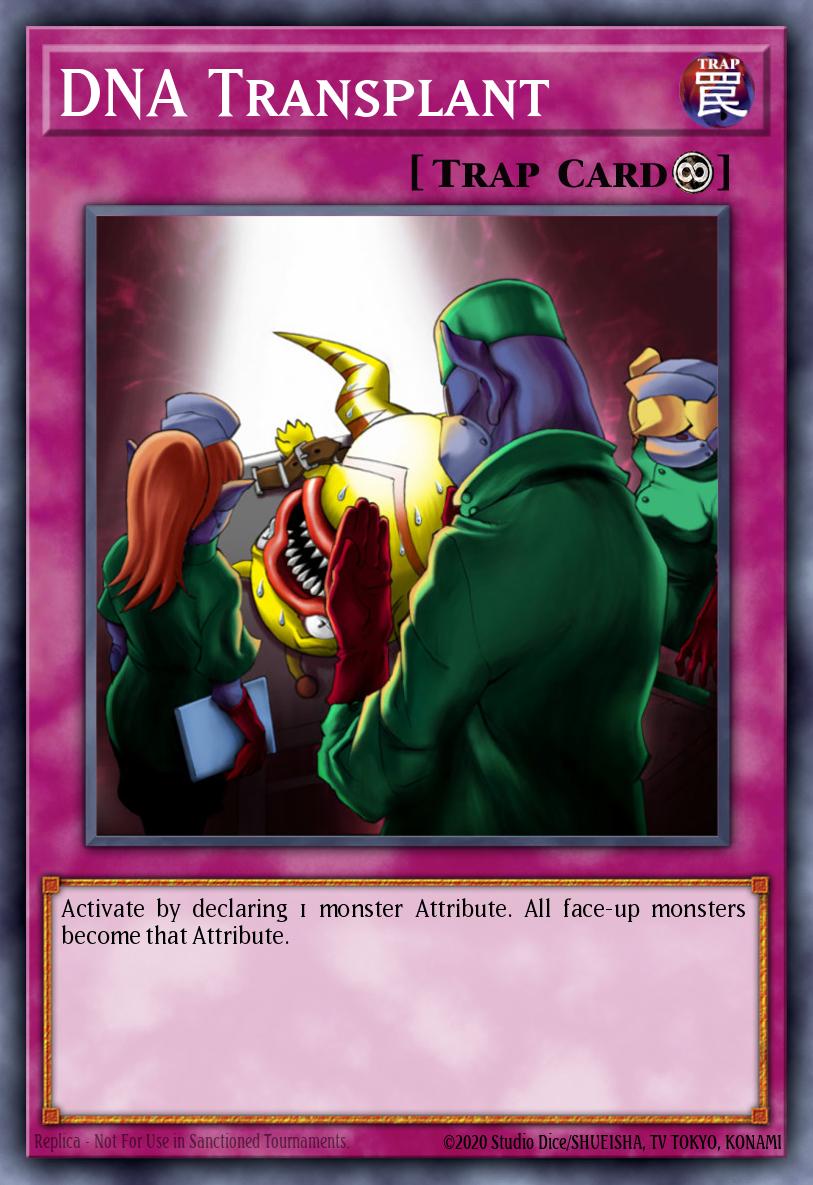
The number one card anyone on the internet will recommend to you when playing Allies of Justice is DNA Transplant. Fairly easy to see why. Instead of hoping that your opponent uses the Light Attribute, you simply force them to. But while this is still an option you can go for the card has a few blunders. Namely having one turn of waiting time, being easily destroyable, nearly unsearchable and a dead draw in many occasions. It also interferes with other cards further down in the article, for example Heavy Metal Raiders. Finally, the played Allies will often work with Light monsters in other zones. Cycle Reader and Decisive Armor are only two examples that interact with Light monsters outside of the field. So, while you can play DNA Transplant if totally necessary, it is not nearly as useful as advertised.
There is as much pleasure in giving...
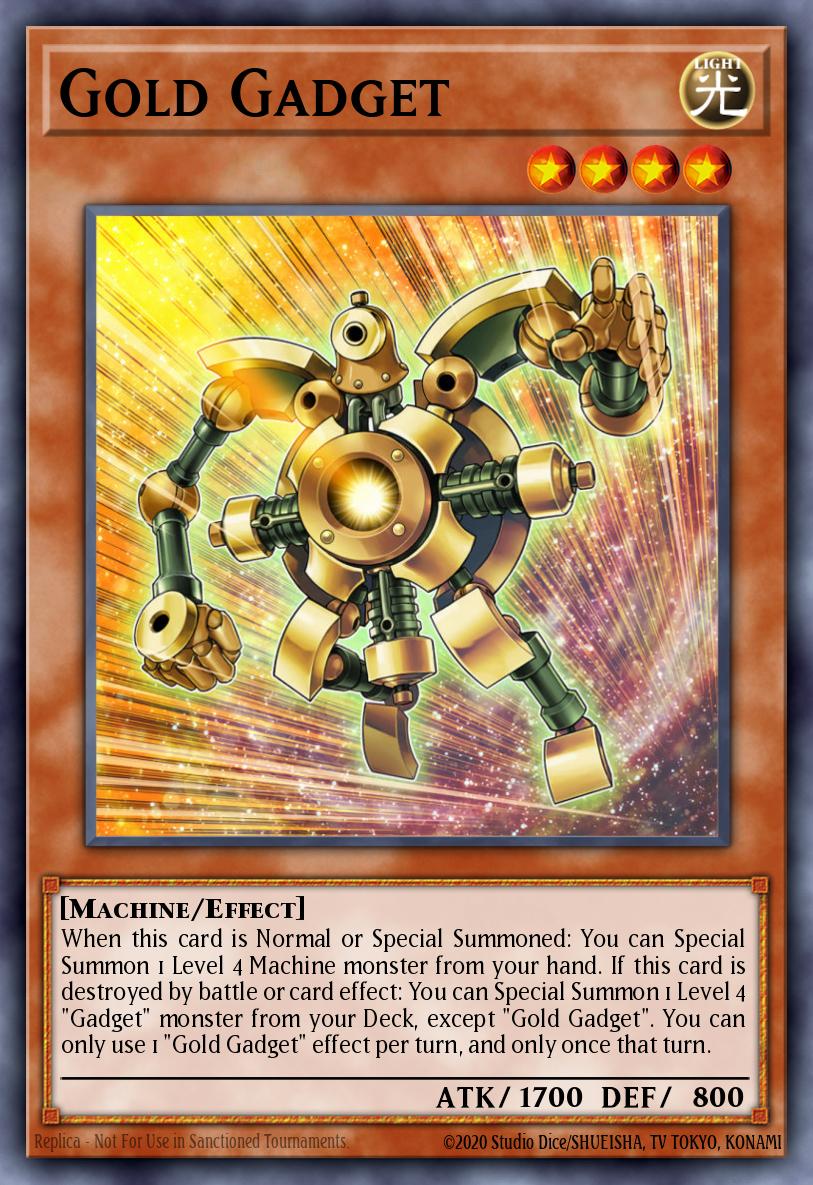
This brings us to options aiming to solve the various issues the Ally of Justice archetype is ladened with. One of the better swarming tools in Machine-based decks are the so-called Johto Gadgets, namely Silver Gadget and Gold Gadget. They are fairly inexpensive, bring more monsters in play and they float on destruction. They also both happen to be Light monsters, which you can actually use to your advantage. Using cards like Creature Swap or Geonator Transverser, you can steal an opposing monster while giving them a Light monster. Additionally, you will still be able to search via the Gadget's floating effects, giving you more resources to work with. Lastly, they are Level 4 monsters, so not only does one Gadget provide you with the resources for a Link-2 summon but they also function as material for a Rank 4 Xyz summon if you Special Summon another Level 4 monster.
...as there is in receiving.
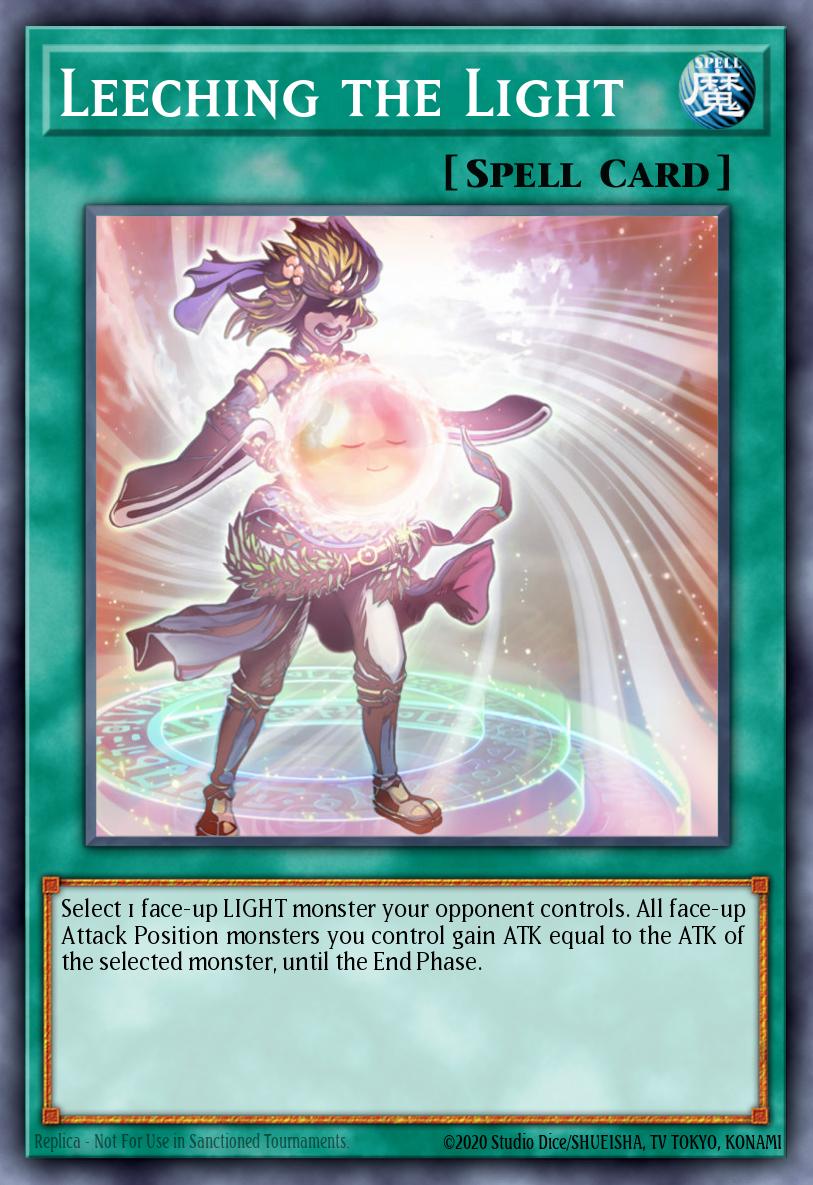
Simply giving your opponent some Light monsters is still not that strong given that only a fraction of playable Ally of Justice monsters profit from it. That is why we will try to spice things up: Leeching the Light, while as unsearchable as Limiter Removal in the deck, is capable of boosting your board to sizeable ATK numbers. Even with your Silver Gadget gifted to your opponent, your entire board will gain an additional 1500 ATK for one turn. This will make OTKing the opponent that much more possible if you have a board to work with; at least from a numbers perspective. And the boost does not stop with the 1500 ATK of Silver Gadget, as you will see in a second...
Bring the Thunder (King)
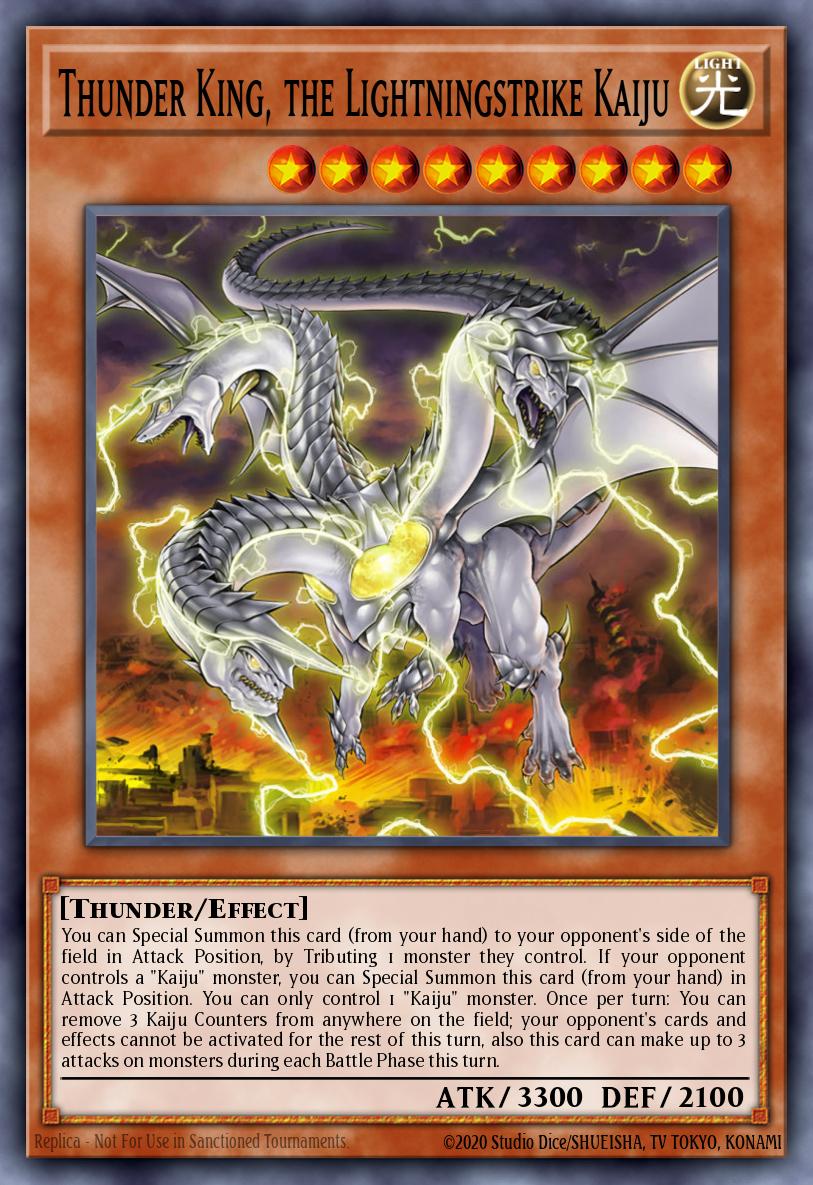
Simply gifting the Gadgets using other cards is a slow and inefficient strategy though. It would be much easier if you could simply put some Light monster(s) on the opposing side of the field; even better if it got rid of stuff while being summoned. Thankfully, we have such options available: Kaijus. Thunder King, the Lightningstrike Kaiju is the perfect fit for the opposing board. It gets rid of monsters (even indestructible ones) and provides the needed Light monster for the Allies of Justice. Furthermore, it gives a 3300 ATK boost to your monsters should you target it with Leeching the Light. If you manage to have both Thunder King, a Gadget and a swapping option available, you can even get your beater back if necessary, running the Gadget over and gain another monster to attack with during your Battle Phase.
More Kaijus, more Fun
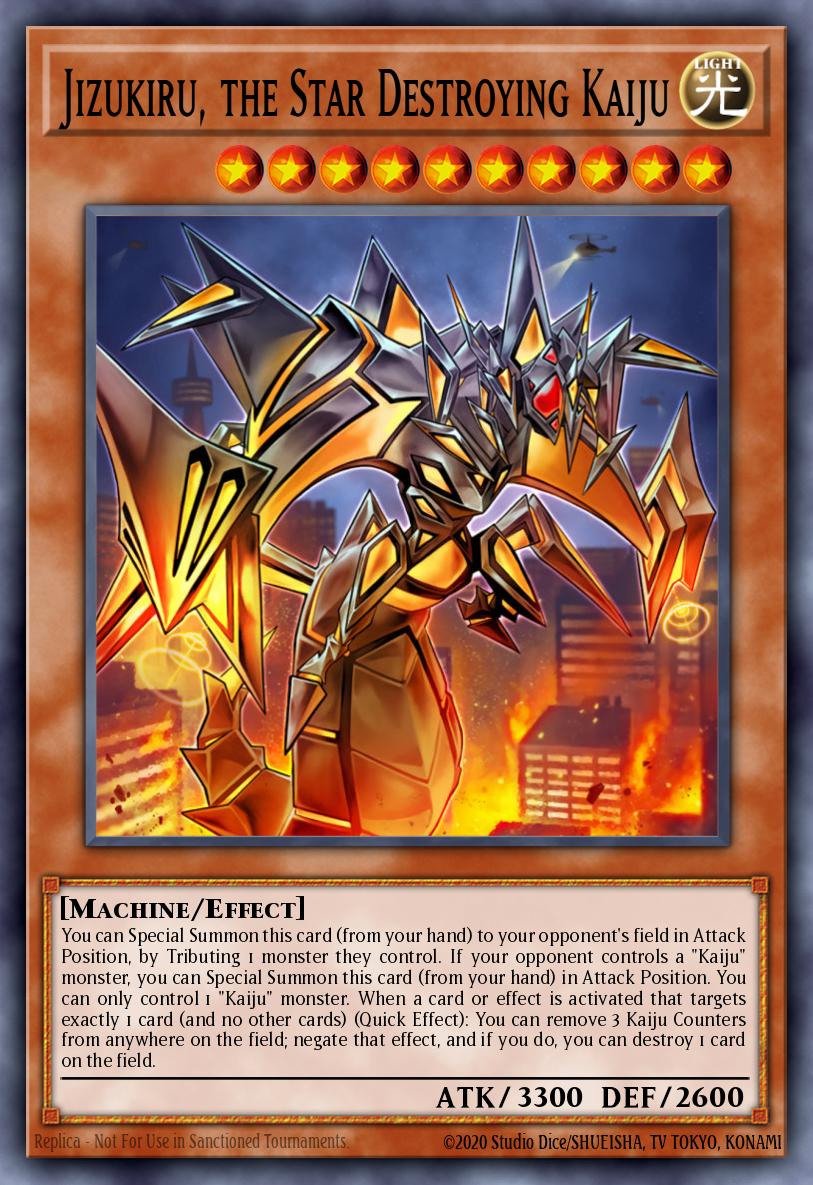
Thunder King will not stay alone in the deck though: Interrupted Kaiju Slumber gives you board clear, triggers any Gadgets you lose in the process and even serves as a Kaiju searcher in the graveyard. The Kaiju you summon to your side of the field using Interrupted Kaiju Slumber is Jizukiru, the Star Destroying Kaiju, which also has a number of things going for it. First off, Jizukiru is another Light monster and can therefore be used exactly in the same fashion as Thunder King. Furthermore, it is also a Machine monster and therefore clocks in at 6600 ATK when Limiter Removal is used. Yet another Kaiju option that ticks all the boxes is Super Anti-Kaiju War Machine Mecha-Thunder-King. Light monster? Check. Machine type? Check. Synergy with the rest of the engine? Absolutely a check.
Keep the Flag Flying
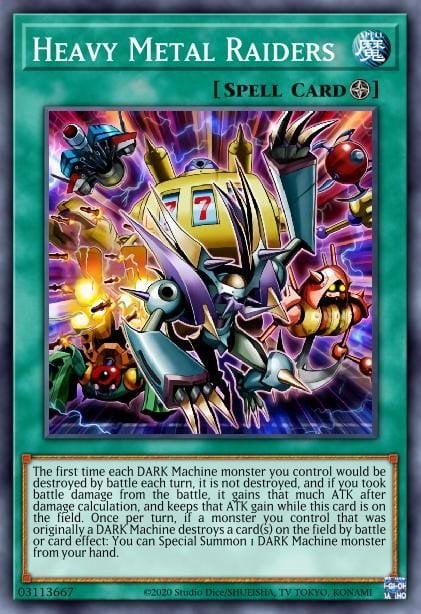
Those were a lot of Light monsters so far. But we are talking about some Dark Machines here, so I should provide some pointers in that direction. Legendary Duelists: Ancient Millennium has given us quite a few useful cards for exactly this combination of Attribute and Type. Starting with Heavy Metal Raiders, we have a Field Spell that supports the beatdown strategy with battle immunity and ATK boosting. It also helps with swarming to a certain extent. A nice option can be found in BM-4 Blast Spider, which provides a destruction effect and some additional burn damage. It also asks for the triggering monster to be originally a Dark Machine, which means the effect works even if the Attribute was changed via DNA Transplant. Lastly, Desperado Barrel Dragon is a sizeable beater, Special Summonable and potentially harmful to the opposing board as a whole.
Rally the Troops
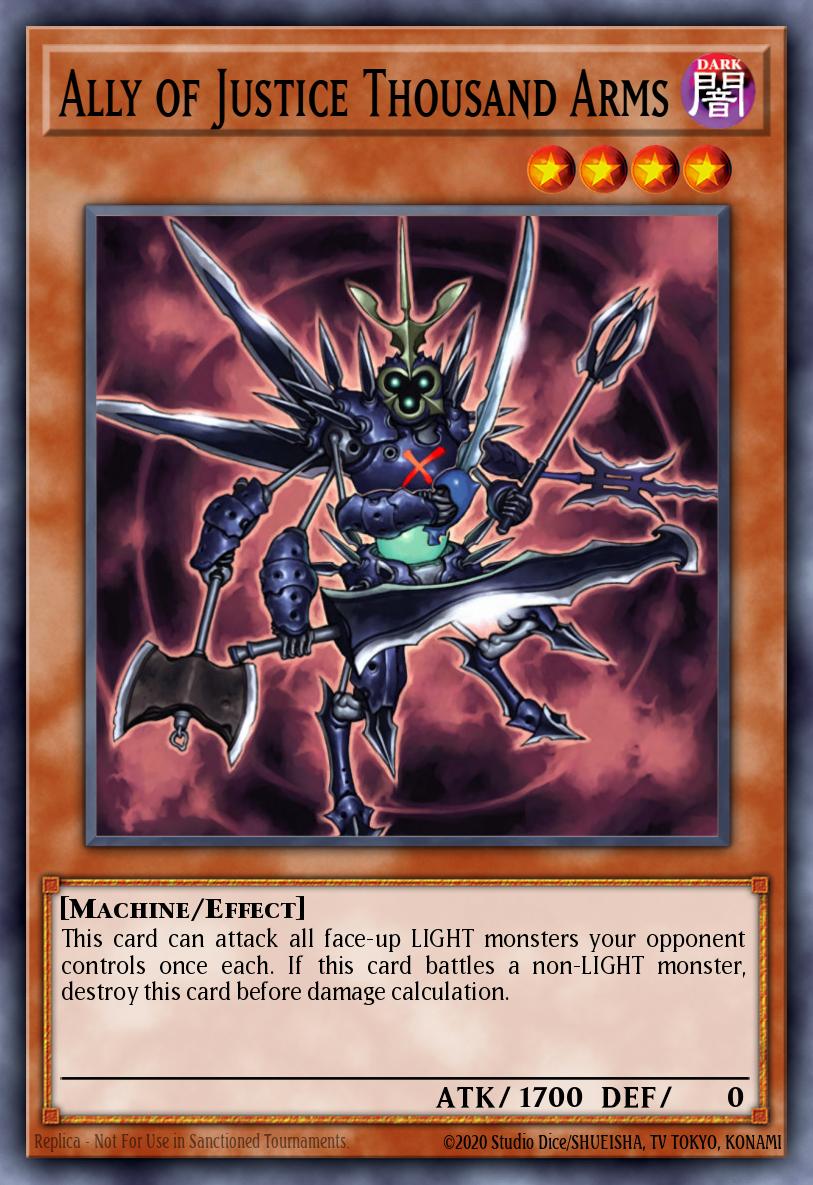
If you are up for some more sillyness, you can go down the Ally of Justice Thousand Arms route. Combining it with Ojama Trio and All-Out Attacks gives you exactly 6000 damage (3x 1700 + 3x 300 burn damage). This approach to deckbuilding also allows you to go with Ally of Justice Cosmic Gateway. Attacking with Cosmic Gateway in the previously described scenario will put the damage about 8000 for the OTK; though any additional ATK boost above 700 ATK on Thousand Arms will turn this into OTKable regions. This deckbuilding route is even more gimmicky than any other approaches, but it can be worth a try in casual scenarios. And if you do not manage to make something with Thousand Arms in battle, you can still simply use it for Extra Deck summons (or ditch it for Allure of Darkness) and work with it that way.
What is (Ge-)next in line?
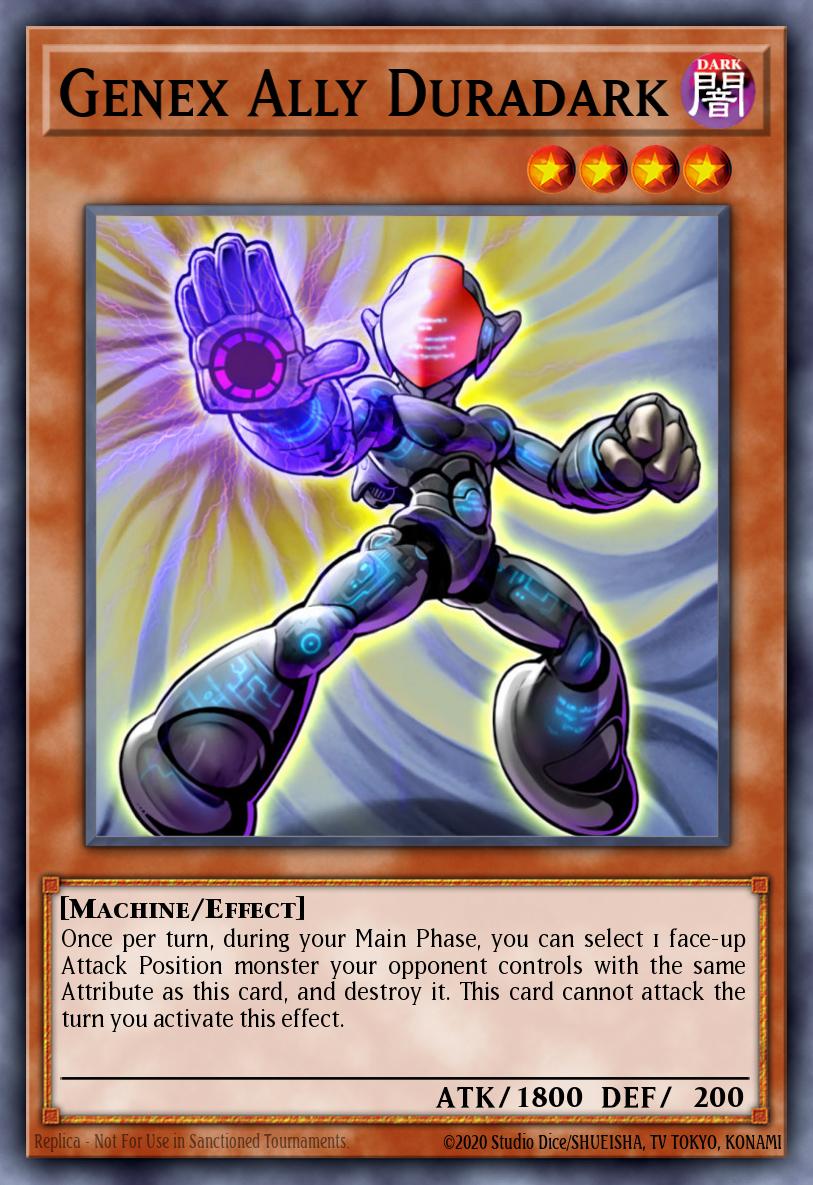
Pardon the bad pun, but the equally unpopular Genex archetype can also provide some allies for the Allies of Justice. Genex Ally Duradark can destroy opposing Dark monsters, while Genex Ally Crusher does the same but whenever monsters with its Attribute are Normal Summoned to your side of the field. That team is rather slow but provides multiple destruction effects against Dark decks while Duradark even has solid 1800 ATK. Another option is the R-Genex Turbo and R-Genex Oracle combo, which gives you the materials for either a Link-2 or a Level 5 Synchro summon. And lastly, Genex Ally Birdman has a handy Special Summon ability and is a Level 3 Tuner. Birdman can be used completely normally, but you can also do schenanigans such as bouncing a Kaiju on your side to put it on the opposing board. Overall, the Genex archetype provides another few tools to work with.
A Beautiful Symphony
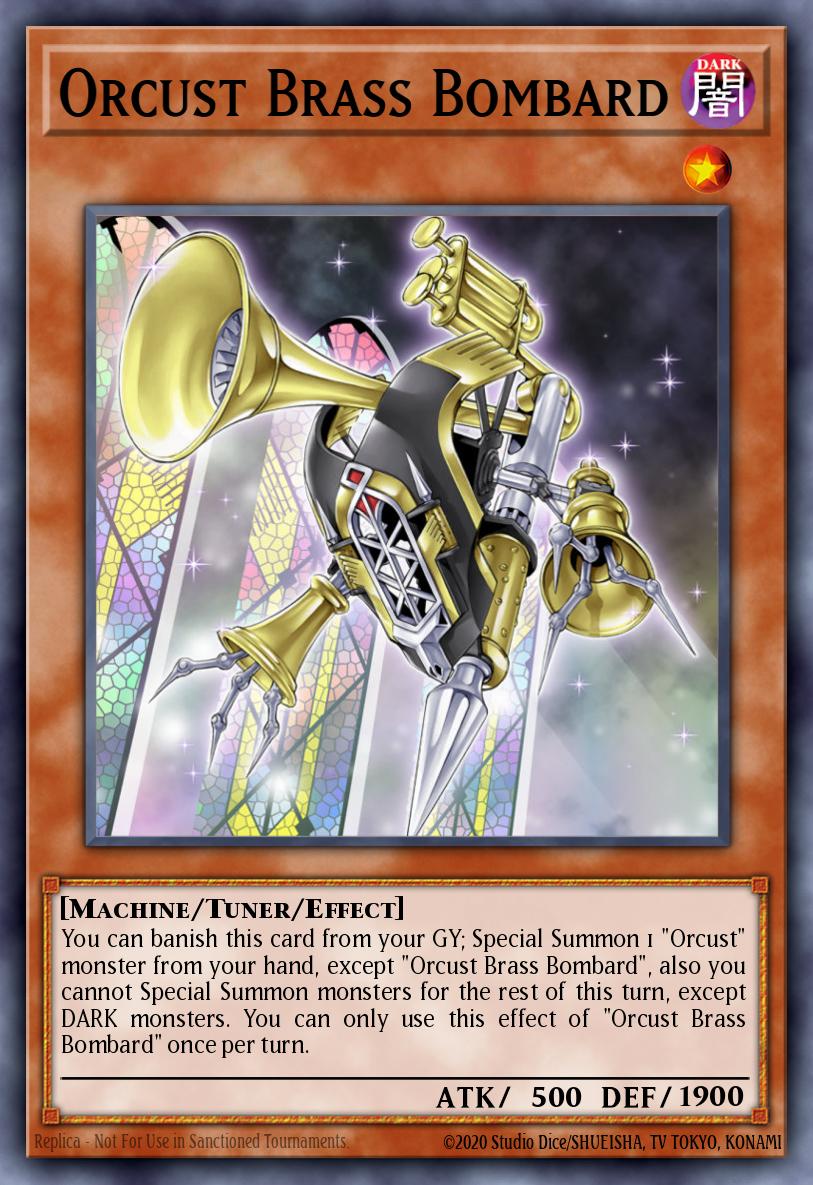
Lastly, an alliance with the Orcust archetype is very fruitful for the Allies. Girsu, the Orcust Mekk-Knight is a fantastic card that can both summon Ally of Justice Catastor on its own while setting up further plays; it is pretty expensive though. Orcust Brass Bombard can work as the Level 1 Tuner the Allies desperately need to summon Catastor if Girsu is not available. And Orcust Cymbal Skeleton is very useful once it hits the graveyard, which is easily done via Girsu and Foolish Burial. Even Orcustrated Release can be worth running, since it has the potential to improve your board significantly; and it does only ask for Machine monsters instead of Orcust specifically.
The Deck Section:
This is an example for a completely non-competitive Ally of Justice deck. As you can see, the deck uses a lot of different cards, but the main idea is pretty straightforward. You run a beatdown deck and therefore like to go second to have a swing at the opposing life points. The Kaijus provide removal, big beaters and Leeching the Light targets, while the rest of the deck either provides destruction effects and/or swarming. The added Leeching the Light and Limiter Removal are cloggy at times but can also lead to rather surprising OTK-scenarios with above 10000 damage. That is some immense potential power, but it is only accessable with sort of a coin-flip consistency.
The deck should overall be relatively budget-friendly, except for the two copies of Girsu, the Orcust Mekk-Knight. I hope that the card gets a reprint soon, but up till than you can exchange it for other Level 4 Dark Machine monsters to keep the price low. Solid, but less powerful options include the Genex line-up or more copies of BM-4 Blast Spider and Ally of Justice Quarantine to keep the amount of Dark Level 4 monsters high. If you want to spend more money than I can only recommend playing more card draw. Pot of Desires is not the best bet since you need your Kaijus, while Pot of Duality stops your Special Summons and is therefore also quite harmful to your overall strategy. However, Pot of Extravagance is an easy pick since there is really no Extra Deck option in there that would be incredibly important.
The Conclusion
Let us cut to the chase: Everyone who heard of the Ally of Justice archetype before is aware of it being rather lackluster. However, simply telling anyone who wants to give them a go that they are bad is not a satisfactory answer either. Working with archetypes that have issues like this one is not easy, but that is exactly want is fun about it: Looking how far you can take it without simply throwing money cards at the problem. The challenge is to make the most out of the cards you are given. Overall, Ally of Justice will need more than a few cards to become even close to viable anywhere and while the chances of them getting some new support are not that bad since Konami revisits quite a lot of their older creations, this will probably not be enough to make them run smoothly.
Is the list I have given as an example the end-all solution? Absolutely not. There is room for improvement and there are various other build ideas possible: Machina was suited to cooperate with the Ally of Justice archetype before, and now the new support gave them some Dark members for further synergy. In fact virtually any Machine archetype can be combined with them, since Machine-based decks are normally not that restrictive. You can also try to fuse them with some Chaos cards, since the deck already runs multiple Dark and Light monsters. Long story short: If you still want to give them a go and try your own deckbuilding skills at the light-hating Anti-Worm Machines, feel free to do so.



